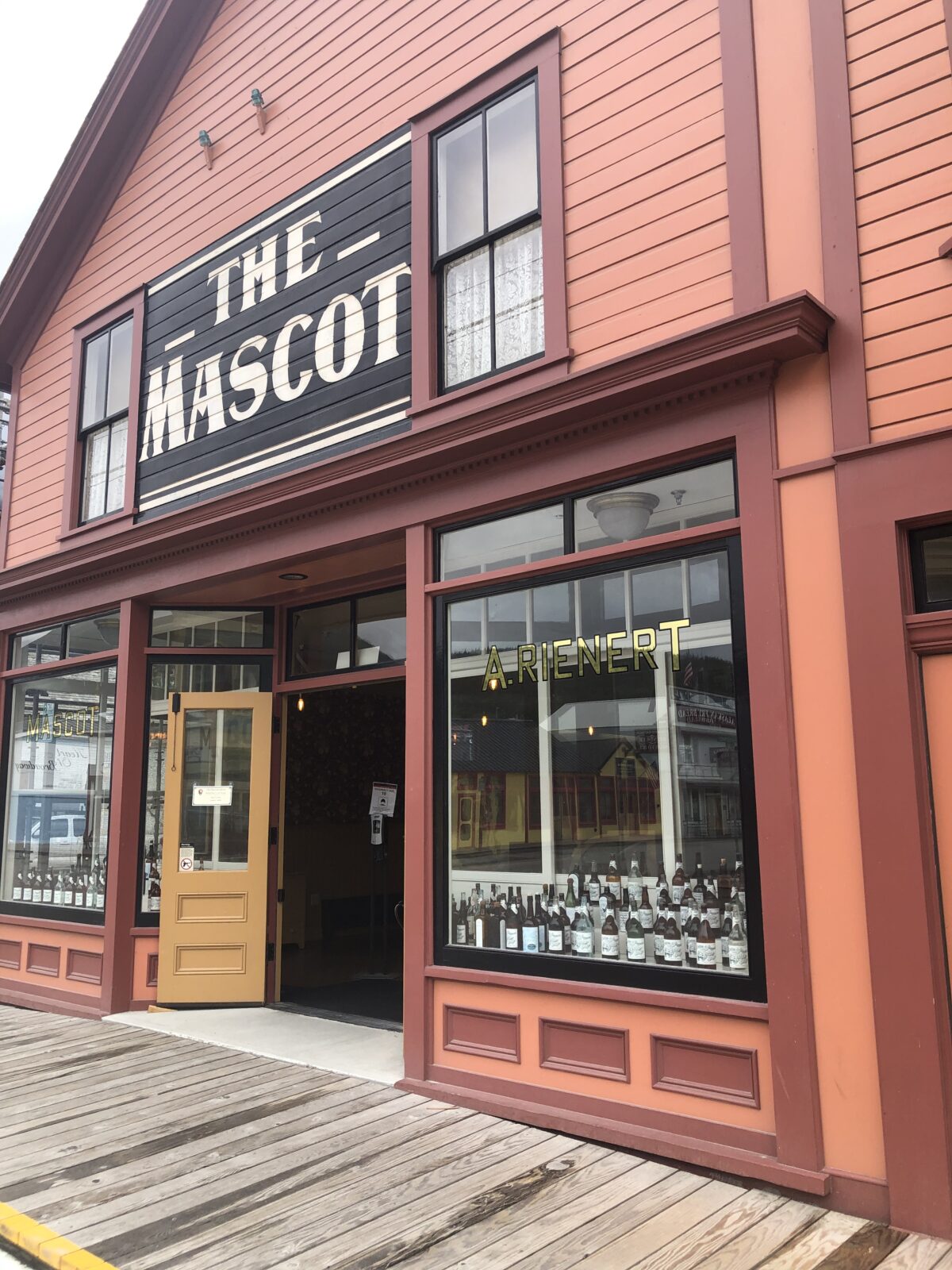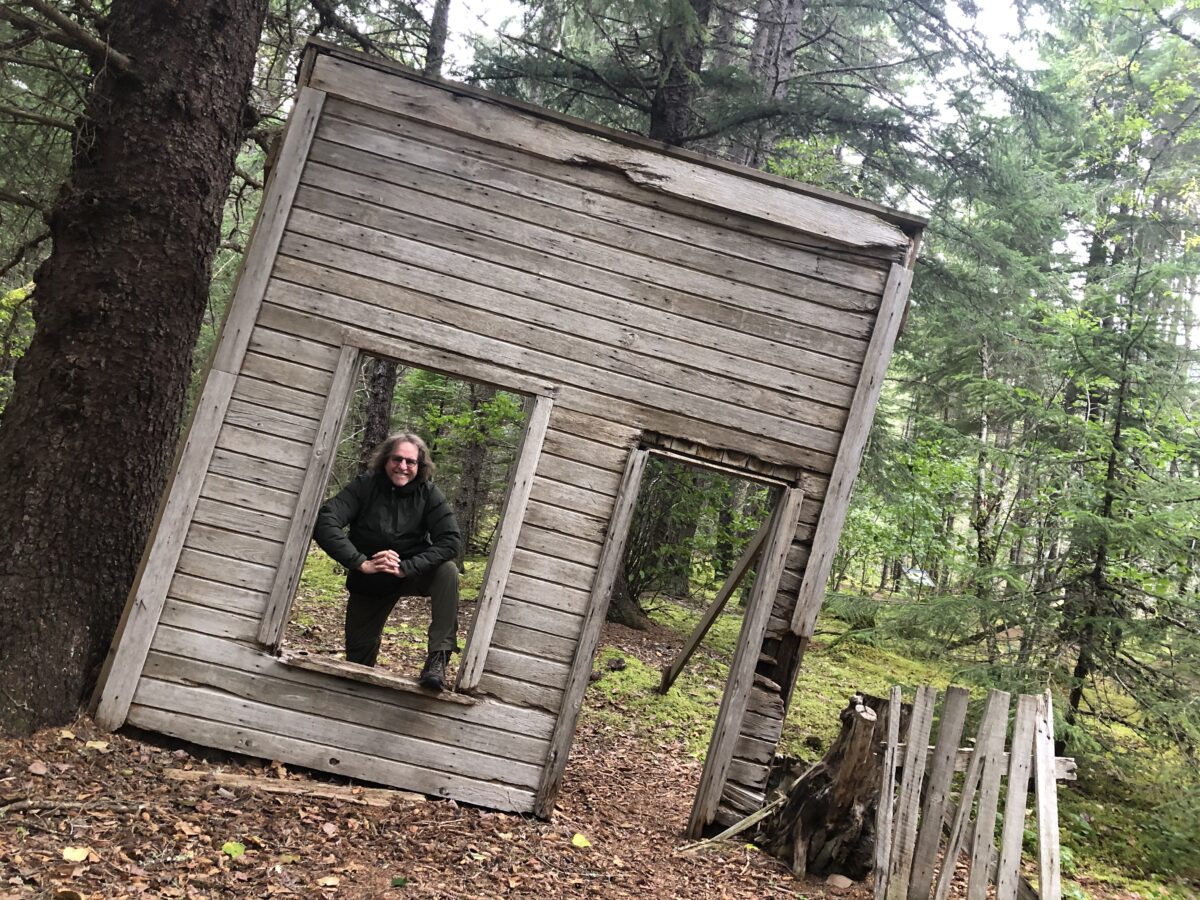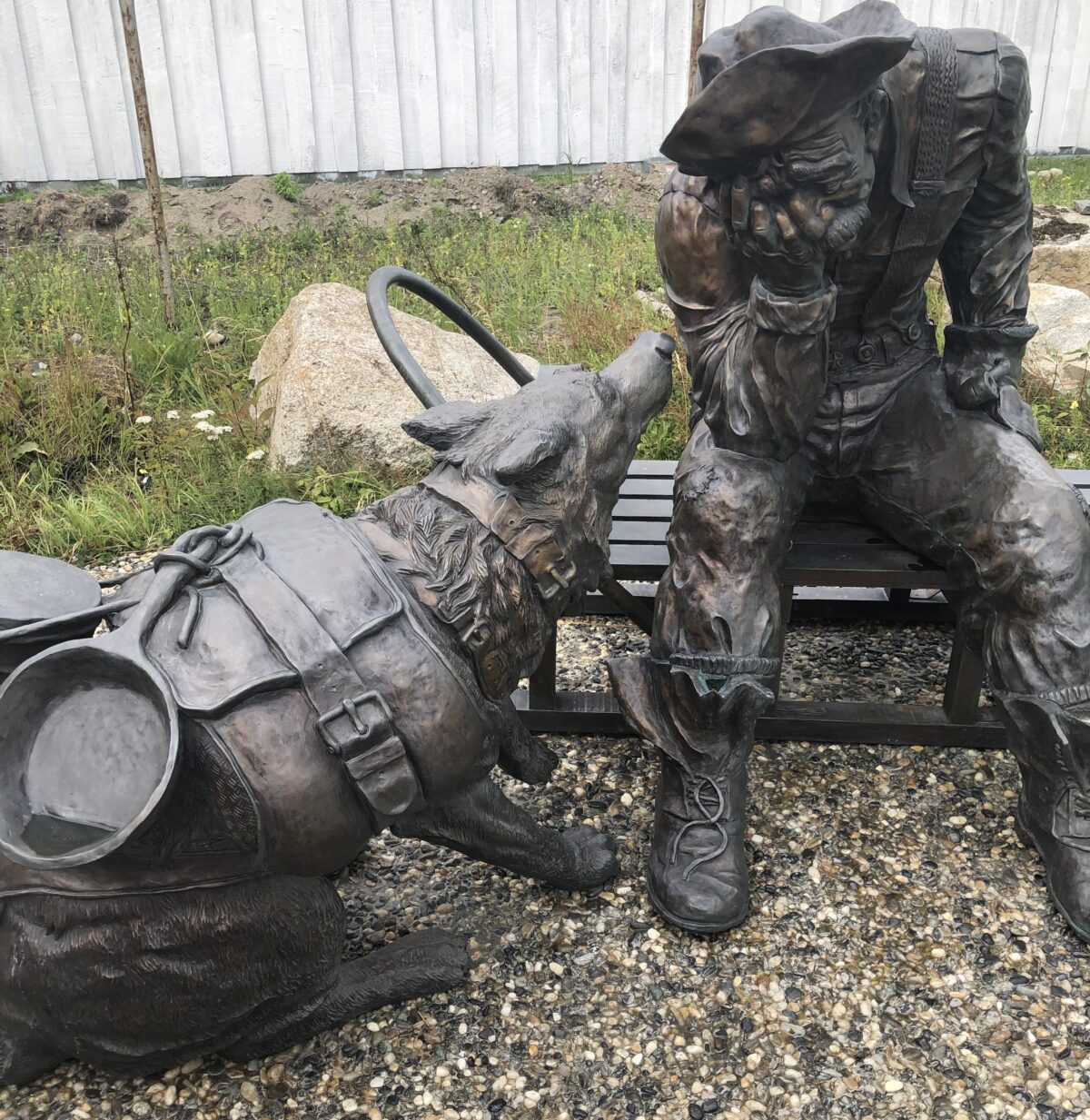Klondike Gold Rush National Historical Park
Would you believe that Klondike Gold Rush National Historical Park in Skagway is the most visited national park unit in Alaska? Over 900,000 people visit there each year; most arriving on big cruise ships. In fact, the only way to get to Skagway from within Alaska is to come by boat or fly (its just 45 minutes from Juneau).

The only road into Skagway is the South Klondike Highway, connecting Skagway, Alaska, to Whitehorse in the Yukon, Canada. If you rent a car in Skagway, be sure to drive up to the Welcome to Alaska sign. It’s in the no-mans land between the US border and the Canadian border. Be sure to check in with the US border patrol before you drive out there. You will need ID to get back into the US.

About Klondike Gold Rush National Historical Park
Declared a national historical park in 1976, Klondike Gold Rush preserves the memory of the gold stampede. Although no gold was ever found in Skagway, this community was the gateway to the Klondike Gold Fields, 600 miles north of there, in Canada.

In 1896, gold was discovered in the Klondike Gold Fields (present day Dawson City, Yukon). “Stampeders” from all over the world rushed to get there and strike it rich! Many departed from Washington (a part of Klondike Gold Rush National Historical Park is located there), aboard freighters bound to Skagway.
Although not easy, the passage from Skagway became popular because both the White and the Chillkoot passes were passable and ice free at least a small part of the year. 90% of the stampeders came through there to make their way overland to the gold fields. The all-water route was perhaps safer and easier, but it would have taken them hundreds of miles through Alaska to get to the gold fields via a steamboat on the Yukon River. They called this the “rich man’s” route!
Visiting Klondike Gold Rush National Historical Park
When you visit Klondike Gold Rush National Historical Park, you will learn about this crazy period in our history. It was amazing to hear how people gambled their life savings and their lives, making the arduous trek to the gold fields just hoping they would strike it rich. Most didn’t make it and the ones that did, arrived there to find most of the claims were already taken.
There are over 100 historic buildings in Skagway that have been preserved, many restored or in process of restoration by the National Park Service. They really tell a story of the gold rush days. It was interesting to hear how much profit was to made from the stampeders – outfitters and packers, shopkeepers, bars, hotels and houses of ill-repute.

This town grew up overnight. In fact, at one time, there were as many as 80 saloons in town. One of the longest running saloons has been restored – the Mascot Saloon – with some fun stories of shysters like “Soapy” Smith.

It is also interesting to visit the Moore House, built by Captain Moore, another one of the people who made money from the stampeders. He saw the opportunity and homesteaded 160 acres, first building a log cabin there in 1887. He built a sawmill and a dock; and made money by selling timber to the stampeders and charging ships to dock at his wharf. Captain Moore also promoted the alternate “White Pass” trail – shorter, but more treacherous. We enjoyed the exhibits in the house, but even more so, we had fun talking to the ranger there. She had so much knowledge and passion; she really brought the history to life.

There is so much to learn about there, we won’t even attempt to talk about it all. You can certainly read lots about the gold rush, and if you visit, the national park visitor center has a ton of great photos and memorabilia. We found it especially interesting to hear how many supplies the stampeders had to carry on the trail. In addition to personal gear and equipment, Canada required a full year’s worth of provisions.
Things weren’t lightweight like we have today. Think heavy leather boots, canvas tents or tarps, sacks of flour and sugar, bacon, beans… plus timber to build a boat for their eventual trip across Lake Bennett and the rapids beyond. Folks were carrying as much as a ton of stuff. Unless they were rich enough to hire packers (which most weren’t), that meant shuttling gear. Some had to go back and forth over the 33 mile trail as many as 20 or 30 times!

Plus it wasn’t like these were real trails. Folks were slogging through mud, crossing flowing rivers, dragging their way up hills and around fallen trees. Not to mention the never-ending threat of bears and weather that could turn icy overnight. Oh, and the Golden Stairs, gaining 1000 vertical feet in 1/4 mile. That’s a slog even today with just a backpack and ultralight gear!

Dyea Historic Town Site
While many began their journey in Skagway, others started from Dyea, a small Tlingit village that was closer to the start of the Chillkoot Trail – a historic Tlingit trading route. Located on the flats, large boats could not land there. Folks had to unload their gear onto a flat boat. The visitor center has some great photos of the melee that was!

The town is no longer there, but we liked wandering along the trails there. It was hard to imagine that this was once a bustling village with over 150 businesses. Today there are only a few foundations and one historic structure remaining. Unfortunately this is not walking distance from Skagway. You will need a car or some sort of transport.

Chillkoot Trail
Also outside of town is the trailhead to the Chillkoot Trail. We did the first few miles of the trail just to get an idea of the obstacles the stampeders faced. Now a very well manicured trail, it is still pretty hard. We really couldn’t imagine how difficult it must have been to carry a ton of gear overland!

Today it is possible to backpack the entire 33 miles of the trail between the US and Canada. Both governments cooperate to maintain backpacker facilities along the trail. You do need a permit for that. They can tell you all about the trail at the Chillkoot Trail Center in the old Boss Bakery Building in Skagway.

An easier way to explore the passage is via the White Pass & Yukon Railroad. They offer daily excursions. The old train depot is visitor center – a great place to start any journey!

Skagway is a fun town to explore and well worth a couple days visit, at least. Along with the national park sites, there are lots of hiking trails right from town as well as shops and microbreweries and restaurants. We saw tons of wildlife!
Cruise ship days, it is a very busy place. Non-cruise ship days are a bit sleepier. We much preferred the latter!
Need Help Planning Your Visits?
If you would like to explore this or other National Park Units, but need a bit help in the planning, please give us a call at (480) 609-3978. We are happy to offer customized trip planning.
#FindYourPark
#SeeAmericaFirst

